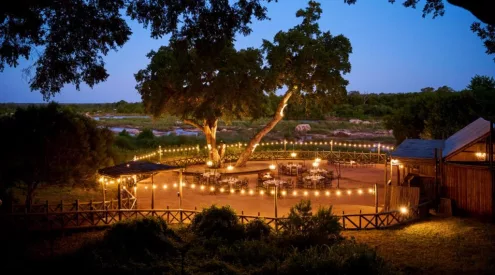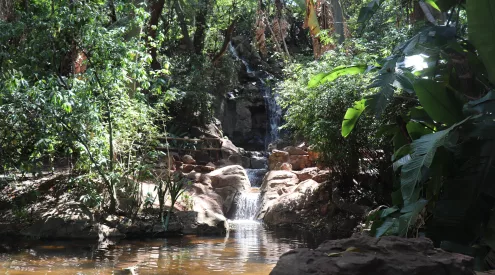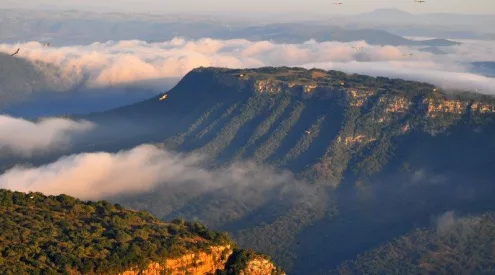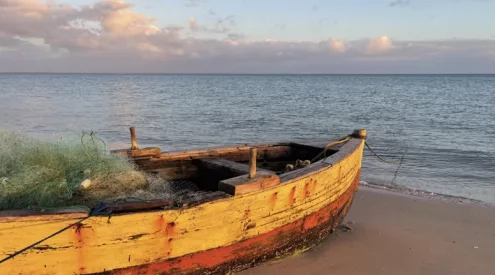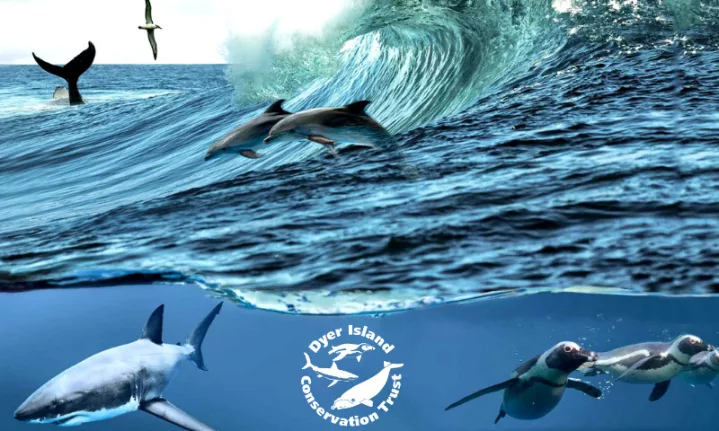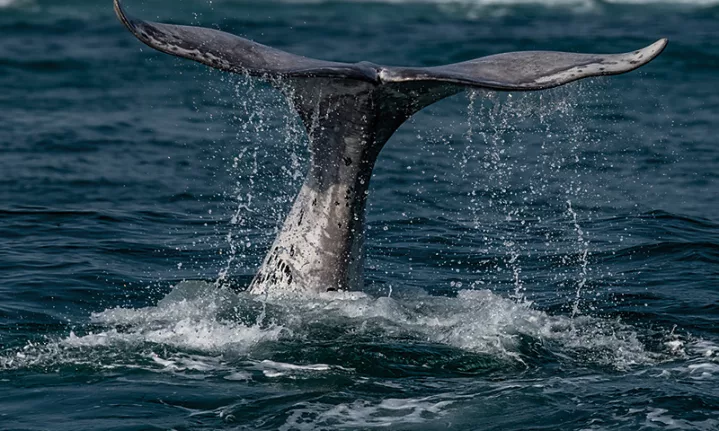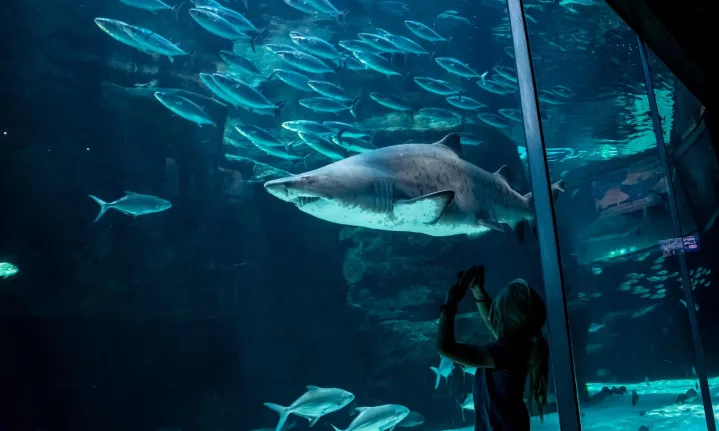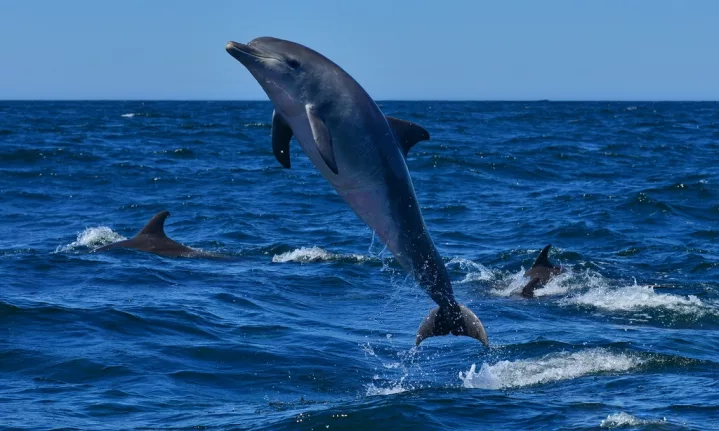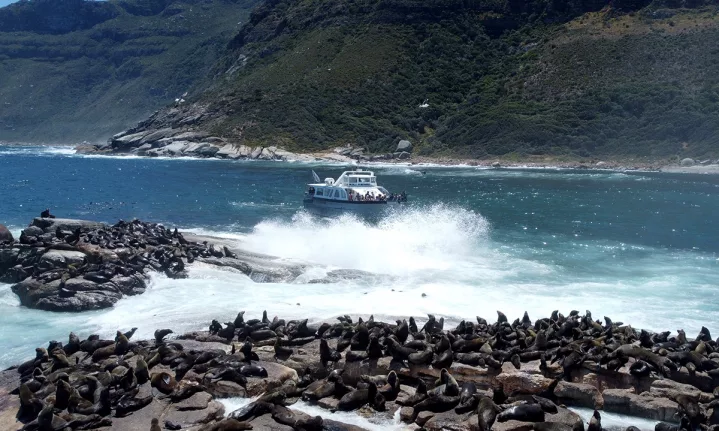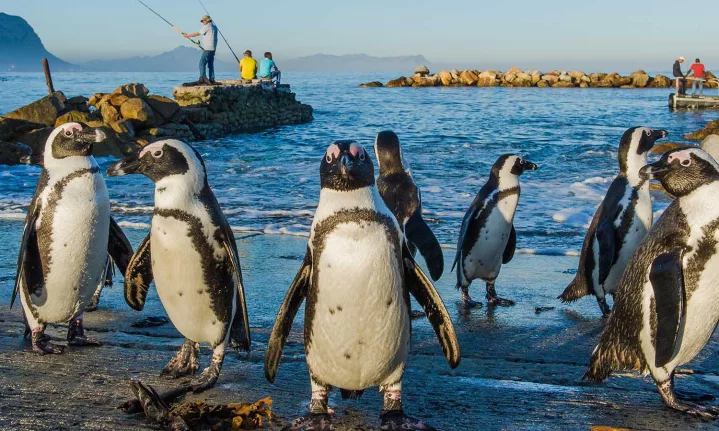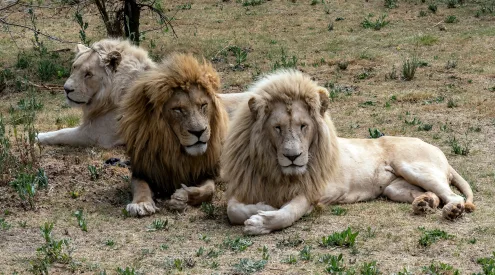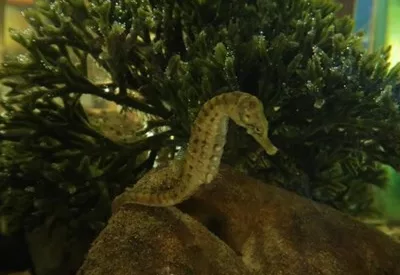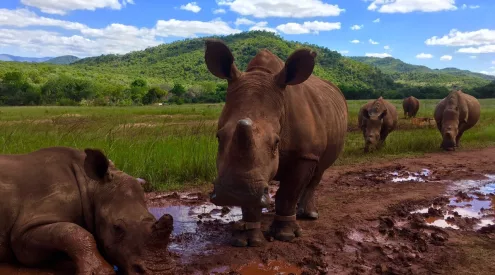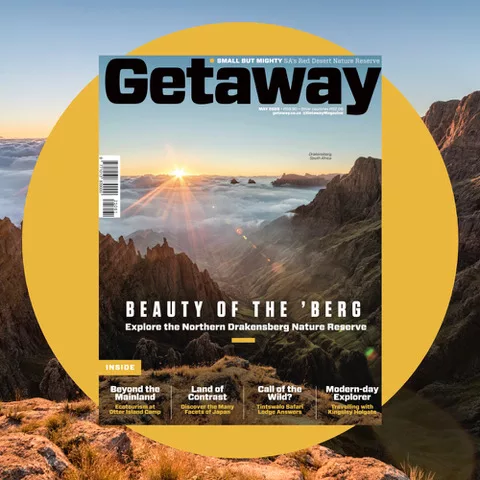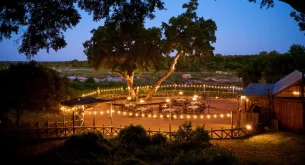When it comes to wildlife encounters, South Africa’s Marine Big 5—whales, sharks, dolphins, seals, and penguins—are as iconic as the land-dwelling Big 5. Most travellers experience them from the deck of a boat, but there’s a slower, more mindful way to connect with these ocean giants.
Whether it’s from clifftops, through a snorkel mask, or on a quiet kayak paddle, these land-based and low-impact alternatives let you see the mammals on their terms, with your feet (mostly) on solid ground. Here’s how to experience the magic beyond the boat.
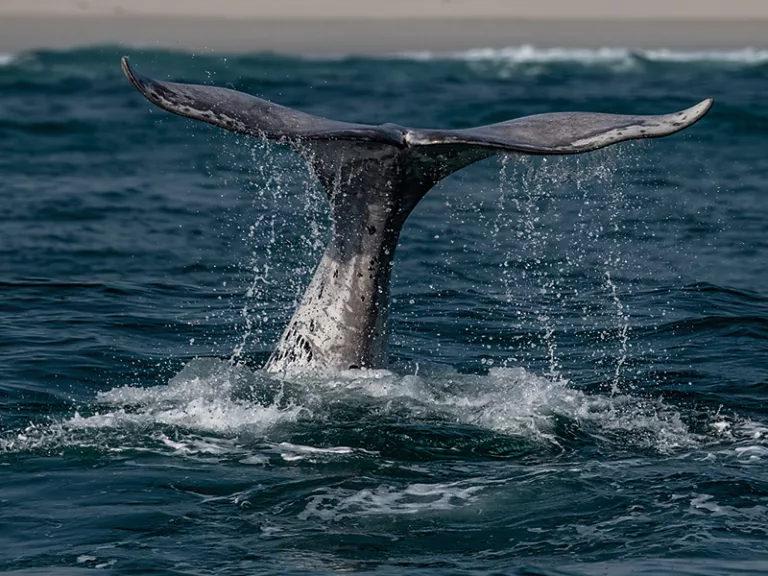
Picture/Wildpix Africa
Whales from clifftops and kayaks
Few places offer such dramatic, land-based whale watching as Hermanus, where southern right whales cruise just metres from the shoreline during breeding season (June to November). The scenic Cliff Path, stretching 12 km along the coast, offers multiple vantage points, including benches for lingering sightings.
For those willing to go further off the beaten path, De Hoop Nature Reserve provides one of the country’s most remote whale-viewing opportunities. From the towering white dunes, whales can often be seen breaching in the turquoise waters below.
Prefer to be closer to the action? In Plettenberg Bay and Walker Bay, guided kayak tours let you experience whale sightings from the water, with no noisy motors, just the sound of your paddle and the ocean around you.
Sharks through glass or scuba goggles
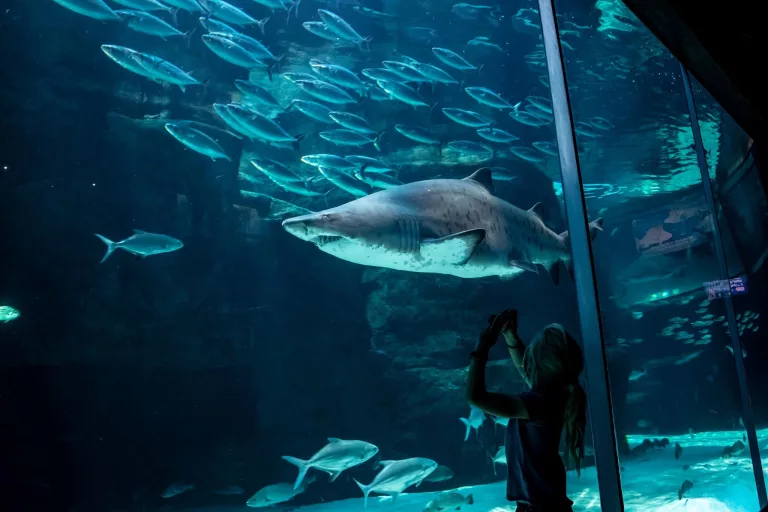
Picture/Karin Schermbrucker
Shark viewing doesn’t have to mean cage diving. At Cape Town’s Two Oceans Aquarium, you can learn about ragged-tooth and other shark species through interactive exhibits and even scuba dive in the predator tank (for certified divers).
For more daring adventurers, Aliwal Shoal off the KwaZulu-Natal coast offers ethical scuba diving with sharks in their natural environment—no cages, no baiting, just raw, wild encounters with oceanic blacktips and tiger sharks.
Prefer to stay dry but still contribute to research? Join a marine conservation volunteer program, like those run by Sharklife or Marine Dynamics, where you can help with data collection, shark tagging, and educational outreach.
ALSO READ: 5 wild places for animal lovers to visit in Cape Town
Dolphins on the horizon and at eye level
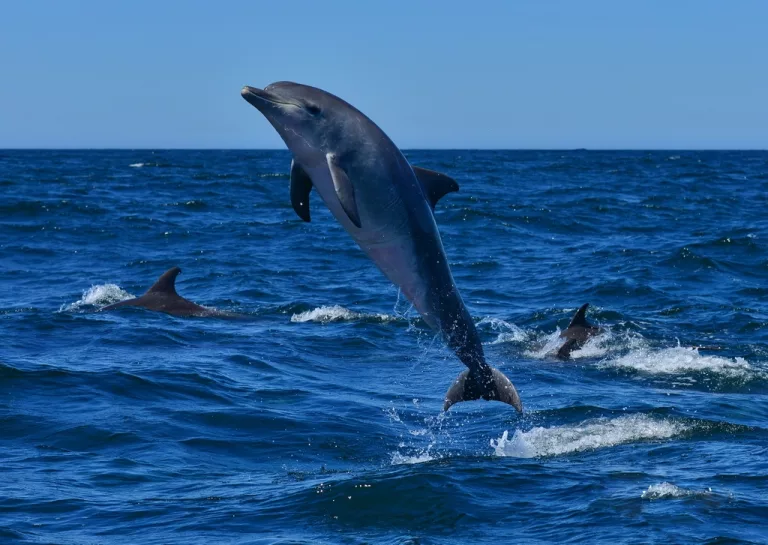
Picture/Nelson Mandela Bay Tourism
There’s something unforgettable about watching dolphins catch waves at sunrise. Along the Chintsa coastline in the Eastern Cape, early risers are often treated to pods of dolphins playing in the surf.
For a more immersive experience, stand-up paddleboard (SUP) or kayak tours in Knysna and Plettenberg Bay offer gentle adventures where dolphins sometimes swim alongside. Keep your distance, and let them come to you—if they choose.
Hiking in Tsitsikamma National Park also offers unexpected marine delights. From the suspension bridge or lookout points along the Waterfall Trail, dolphins can often be spotted racing across the Indian Ocean.
Seals in the surf and snorkel zones
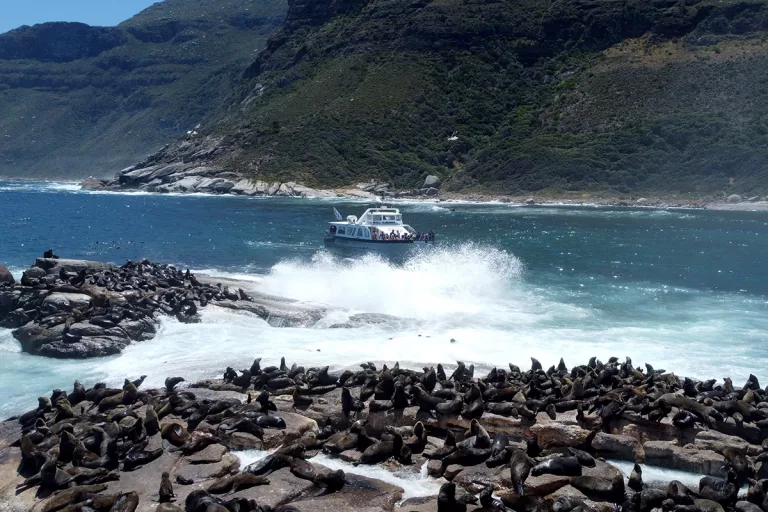
Picture/Drumbeat Charters
Cape fur seals are known for their playful energy, and there’s no better way to experience this than by snorkelling at Duiker Island in Hout Bay, where guided trips let you float among curious pups and watch them dart through the kelp forest.
On land, head to Robberg Nature Reserve near Plettenberg Bay. The dramatic peninsula trail winds past seal colonies where hundreds gather on rocky outcrops, barking, sunning, and tumbling into the sea.
If you’re curious about rehabilitation efforts, many coastal towns work with seal rescue centres. These centres occasionally offer behind-the-scenes educational visits, allowing you to witness the care involved in getting injured animals back into the wild.
Penguins on foot and by paddle
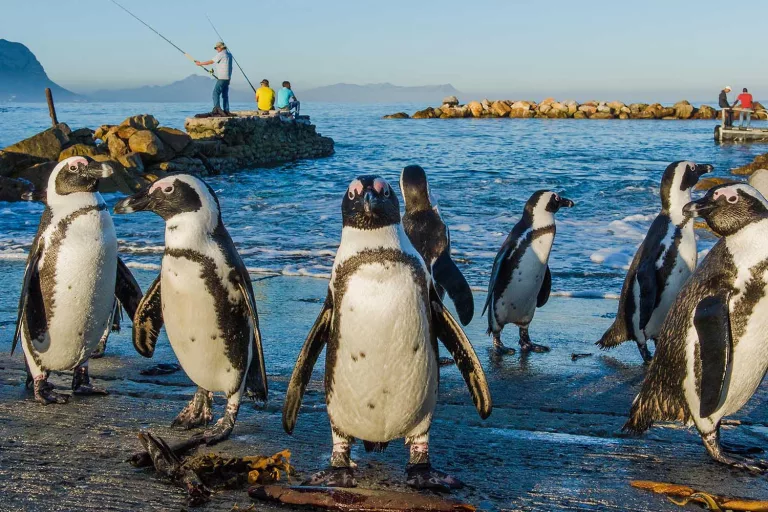
Picture/Peter Chadwick
Everyone knows Boulders Beach, with its charming colony of African penguins waddling through the sand. While it’s popular for a reason, the trick is to visit early in the morning or during shoulder seasons to avoid crowds.
For a quieter experience, make the trip to Stony Point in Betty’s Bay. Elevated boardwalks give you excellent views of one of the largest breeding colonies in the country, all without the tourist traffic.
From Simon’s Town, you can also kayak past penguin colonies for a unique and non-intrusive view of them in the water—just paddle quietly and stay clear of their nesting zones.
Travel with impact: Do’s and Don’ts
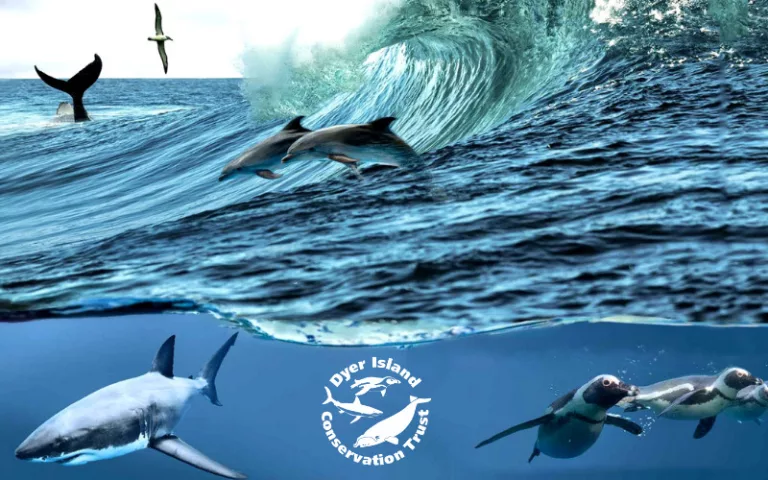
Picture/Dyer Island Cruises
Support marine conservation charities
Your travel can do more than satisfy your sense of wonder. Consider donating to or volunteering with organisations like:
- Dyer Island Conservation Trust (Gansbaai)
- SANCCOB (Cape Town and Gqeberha)
- Sharklife Conservation Group (KZN)
- Two Oceans Aquarium Education Foundation
Respect wildlife viewing distances and breeding seasons
- Stay at least 30m away from whales and dolphins when kayaking or onshore.
- Never approach seals or penguins while they are resting or nesting.
- Avoid flash photography and loud noises.
- Follow guidelines from certified eco-guides and operators.
Seeing the Marine Big 5 doesn’t have to be fast, crowded, or disruptive. Whether you’re walking the cliff paths of Hermanus, snorkelling beside seals, or spotting penguins from a kayak, these alternative experiences offer something more lasting: awe, appreciation, and a deeper connection to our oceans.
Follow us on social media for more travel news, inspiration, and guides. You can also tag us to be featured.
TikTok | Instagram | Facebook | Twitter
ALSO READ: Rehabilitating Kai: How your visit to the Two Oceans Aquarium helps protect endangered turtles




